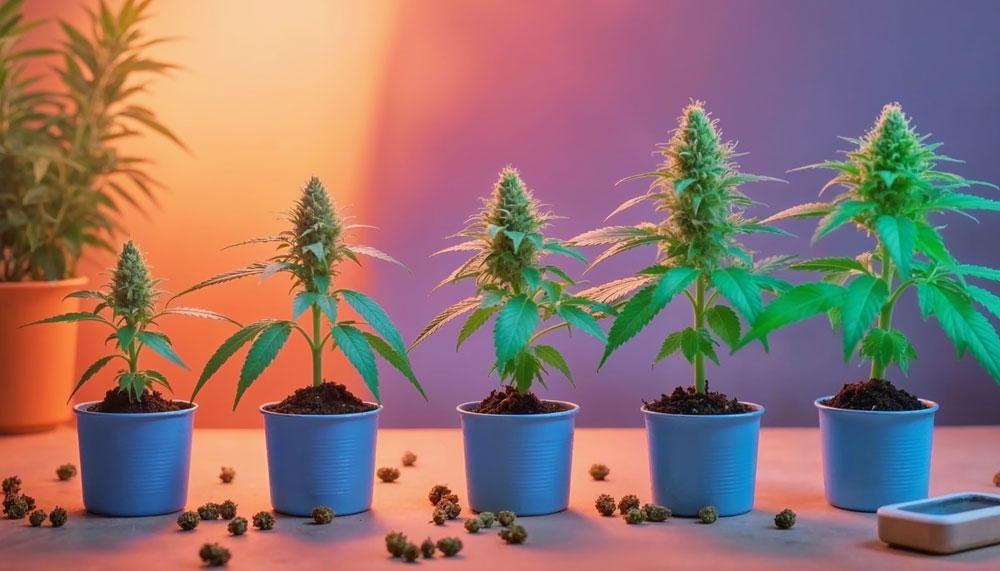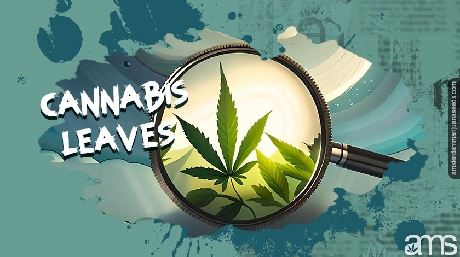 By:
Amos Mwaniki
By:
Amos Mwaniki
Marijuana lovers! Gather around, and let’s talk about the leaves of your legendary pot. It sounds unusual, but there are many things you probably don’t know about the marijuana plant. You might have a million acres of carefully tendered marijuana and still miss out on the fun of knowing your leaves. So, the idea of this review is simple; we will talk extensively about marijuana leaves and get you better acquainted with your favorite marijuana strain. If you wait until the last sentence, you’d understand how best to read your marijuana leaf.
Knowing how to examine the marijuana plant is a skill. Many times, the returns of your investment depend on plant health. Of course, unhealthy plants are more likely to yield low returns. Low returns subsequently shorten your average profit per season. To better track your plant health, you need a better understanding of cannabis leave anatomy. This is why we have written this awesome guide to lead the way. Get strapped in!
Plant science takes the first place in understanding the importance of healthy marijuana leaves for your plant. Just as with every plant out there, cannabis leaves are the main life support system for your weed plant. Healthy leaves directly absorb sunlight to manufacture organic nutrients that serve every part of the plant. This nutrient-manufacturing role is strictly limited to the leaf and other parts of the plant with chlorophyll –a green pigment needed for nutrient production. The big science term describing this complex process is called; Photosynthesis, so the leaves are the natural solar panels generating organic nutrients for your plant. They don’t just look the part; they act the part!
If marijuana leaves directly make nutrients for the plant, then it is logical to understand they also determine plant yield. The nutrients produced by the leaves are transferred to other parts of the marijuana plant. With healthy leaves, you are sure to have the best yield in leaf, flower, and stem. Your harvest might eventually depend on how healthy your leaves have become during the growing season.
A cannabis leaf is an irreplaceable symbol of the 420 culture. Consider how the Big M reminds you instantly of McDonald’s fast-food chain. That is exactly how important sketches of marijuana leaves remind us of the emerging global marijuana industry. More than just a symbol, many joint smokers consider the cannabis leaf an identity.
How well do you know your cannabis leaf? How well can you identify the different parts of the weed leaf? Generally, leaves are compound, with multiple leaflets, as opposed to other plants that grow a single leaf on each leaf node. On every pot plant, the leaves are developed in pairs – each at opposite sides of the stem.
There is vertical space between the leaf pairs. During the vegetative stage, as the cotyledons open, the leaves are first developed as serrated leaves. With time, more and more leaves are formed. Here are the most important anatomic parts of your leaves.
The parts listed above are the leaves’ outer parts. Although leaves are fragile, they are made of complex layers of cells. Layers of cells below the surface are microscopic, so you don’t get to see them always. Other important parts of the plant hidden below the surface include epidermal cells, guard cells, palisade mesophyll, spongy mesophyll, and vascular bundles.
You probably might have noticed that cannabis leaves appear in different shapes, patterns, thicknesses, and colors. Observations might have stimulated your curious mind to ask how many types of marijuana leaves there are. There are three main types of cannabis leaves lumped together as Cannabis sativa L. For the sake of making distinctions, the three recognized types of marijuana leaves include Sativa, Indica, and Ruderalis.
It is not common to find marijuana leaf types that do not fit the above categories. Remember that Indica, Sativa, and Ruderalis only describe the main marijuana leaf types. But there is much more. Mutation in plant physiology can lead to great variation in plant morphology. Mutations can give you plant parts with patterns of little or no semblance to the known parts. Many times, a mutation in a plant can give parts that are considered desirable. Other pot leaf types you can get include;
The webbed-type cannabis leaves, as the name suggests, are usually present in a webbed pattern. The leaf fingers and margin are organized into a webbed pattern. Before the legalization of marijuana in many regions, weed farmers tried to stabilize this mutation. The idea was to disguise weed plants from the prying eyes of the law. Now that you can legally cultivate the traditional varieties, only a few people cultivate the webbed-type marijuana leaf. But you can still find them around.
This type looks almost like the regular weed leaf type. However, on close examination, you might notice a few differences. This leaf type seems to develop multiple leaflets from a common petiole. Only a few marijuana farmers still cultivate this leaf type. Although no verified scientific backing exists, many believe the whorled pot leaf flowers have improved potency compared to others.
You probably would not believe this leaf type can ever be found growing on a cannabis plant. First recognized by breeders in Sydney, the features here are significantly different from the regular marijuana strains. The leaflets are succulent and hairless, spotting about 5fivefingers that are only a few centimeters long. Attempts to stabilize this leaf type have not yielded any significant commercial success.
Marijuana leaves can help you better understand how healthy your plant is growing. Simple enough, if you know where to look on the leaf, you can read your cannabis plant and diagnose any growth problem. Here are the most common hints to look out for on your cannabis leaf.
There is a lot your cannabis leaf can tell you about the plant if only you knew where to look. Caring for your cannabis plant can become easier if you pay attention to what the leaves suggest. This in itself can help reduce production costs and increase harvest yield. Knowing your cannabis leaves can also help you select the best strains for your next growing season. All you have to do is listen to your cannabis leaves. Learn to read the signs, and you will be fine.













Related Posts

If you want healthy cannabis plants with high yields and potent buds, using the best nutrients for weed plants is essential. Unlike regular houseplants or vegetables, cannabis has unique nutrient needs at different growth stages.

If you keep a close eye on the leaves of your weed plant, you can prevent a lot of misery during the growing process.

Cannabis leaves are the de facto symbol of weed, besides that they have an important role in the growth and overall development, they help promote the vital process of photosynthesis.